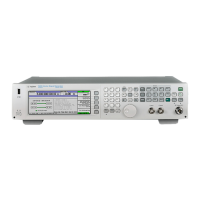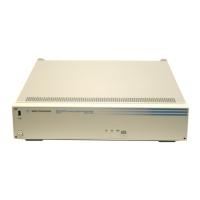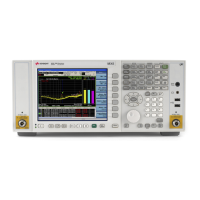10 Agilent N5181A/82A MXG Signal Generators User’s Guide
Signal Generator Overview
Rear Panel Overview
4. FM
5. PULSE
6. TRIG IN
7. TRIG OUT
8. REF IN
In its factory default mode, the signal generator can detect a valid reference signal at this connector
and automatically switch from internal to external reference operation. See “Presetting the Signal
Generator” on page 23. With Option 1ER (flexible reference input), you must explicitly tell the signal
generator the external reference frequency you wish to use; enter the information through the front
panel or over the remote interface.
Connector female BNC Impedance nominally 50Ω
Signal An externally supplied ±1V
p
signal that produces the indicated deviation
Damage Levels 5V
rms
and 10V
p
Connector female BNC Impedance nominally 50Ω
Signal Externally supplied: +1V = on; 0V = off
Damage Levels 5V
rms
and 10V
p
Connector female BNC Impedance high Z
Signal An externally supplied TTL or CMOS signal for triggering operations, such as
point-to-point in manual sweep mode or an LF sweep in external sweep mode.
Triggering can occur on either the positive or negative edge.
Damage Levels ≤ −0.5V and ≥ +5.5V
Connector female BNC Impedance nominally 50Ω
Signal A TTL signal that is high at the start of a dwell sequence, or when waiting for the point
trigger in manual sweep mode.
It is low when the dwell is over, or when the point trigger is received.
The logic polarity can be reversed.
This is a multiple use connector. For signal routing selections, see pages 33 and 57.
Connector female BNC Impedance nominally 50Ω
Signal An externally supplied −3.5 to +20 dBm signal from a timebase reference that is
within ±1 ppm.

